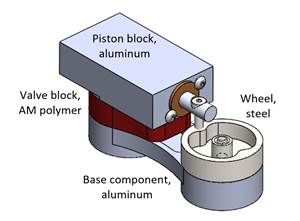The Education Gap
Academic institutions have a responsibility to provide a comprehensive education to students, making them employable.
Share




You’ve seen it haven’t you? Maybe you ignored it or thought it was just this one candidate, but then the next one was the same. And the next one. And the next one. If you work in manufacturing or machining, you know that I am talking about the massive skills gap that exists in our industry, the skills gap that is stunting the growth and success of our companies. While there is not enough skilled labor out there to meet the current demand, the issue we are facing is bigger than that; the skills gap is only part of the problem. What’s the other part? It’s something that is going to continue to make things worse for the industry: the “education gap.”
The education gap can be defined as the gap between what an employee needs to know to make a company competitive and what is actually being taught in schools, tech programs and academic institutions. Let me explain within the framework of machining: Most institutions have not updated their curriculums to reflect the changing nature of the industry, meaning graduates are not being properly equipped with the skills they need to compete for jobs today and in the future.
There is something to be said when it comes to teaching people the foundations, but those foundations must reflect the industry of tomorrow, not the machine shop of 50 years ago. Schools keep emphasizing outdated skills, like the use of shapers. Guess what? It is a complete waste of time. I cannot remember the last time I saw a shaper, much less used one. The sad part is that learning to use a shaper is just one of the many outdated skills that are still being taught today due to outdated curriculum demands. Precious time is being wasted on these skills when the actual skills students need to know, like geometric dimensioning and tolerancing (GD&T) and automation, are being neglected.
Those of us in the industry know how GD&T in drawings is becoming a standard in manufacturing, yet a limited number of educational institutions have even added it as part of their machinist programs. This is the education gap, and not understanding something like GD&T is becoming a very real and significant issue. If this issue gets out of control, parts will not meet the exacting specifications because the machinist and the company doing the manufacturing do not understand the drawings.
GD&T is just one piece of the bigger picture, and the bigger picture is automation. We know this, yet institutions still refuse to add it to their standard curriculums. Now, I can already hear someone challenging me by saying, “Hold up. There are a ton of schools with computer numerical controls (CNCs), so they already teach automation.” I have heard this spiel before. What these schools have is outdated technology from the 1980s, and they just call it automation. While they are technically right, relying on technicalities does not help the students. So, while this technology is “automation,” it is irrelevant. Using this logic, you could argue that factories from the early 1900s with belts running from the ceiling to drive the equipment is automation. Automation is being redefined constantly as new technology is introduced. Today, automation involves multi-pallet, multi-axis machines and robotics, and the machinist who cannot run this equipment will be unemployable.
Yes, this technology is expensive, but students are investing in an education that will make them employable. That is what school is all about. Institutions have a responsibility, and they cannot promise a comprehensive education if they do not have the tools to make it a reality. Machinists are no longer tradesmen. Today’s machinists are technologists. They have to adapt to new technologies and learn new skills. Adding robots to a machine shop is difficult, but with the proper education and know-how, there is no need to fear this technology. It is like any new thing: When you do not understand it, you fear it.
The education gap is preventing progress and hindering the success of so many machine shops. Up-and-comers need to understand the new technologies and processes. If they do not understand them, they will not adopt them, and they will not be employable. Instead, they fear automation and contribute to the potential failure of a machine shop. We need to start in institutions and equip future machinists with the skills they need rather than irrelevant skills and “automated processes” from the 1980s.
Related Content
Solve Worker Shortages With ACE Workforce Development
The America’s Cutting Edge (ACE) program is addressing the current shortage in trained and available workers by offering no-cost online and in-person training opportunities in CNC machining and metrology.
Read MoreWorkholding Fixtures Save Over 4,500 Hours of Labor Annually
All World Machinery Supply designs each fixture to minimize the number of operations, resulting in reduced handling and idle spindle time.
Read MoreSame Headcount, Double the Sales: Successful Job Shop Automation
Doubling sales requires more than just robots. Pro Products’ staff works in tandem with robots, performing inspection and other value-added activities.
Read MoreManufacturing Madness: Colleges Vie for Machining Title (Includes Video)
The first annual SEC Machining Competition highlighted students studying for careers in machining, as well as the need to rebuild a domestic manufacturing workforce.
Read MoreRead Next
5 Rules of Thumb for Buying CNC Machine Tools
Use these tips to carefully plan your machine tool purchases and to avoid regretting your decision later.
Read MoreBuilding Out a Foundation for Student Machinists
Autodesk and Haas have teamed up to produce an introductory course for students that covers the basics of CAD, CAM and CNC while providing them with a portfolio part.
Read MoreRegistration Now Open for the Precision Machining Technology Show (PMTS) 2025
The precision machining industry’s premier event returns to Cleveland, OH, April 1-3.
Read More































